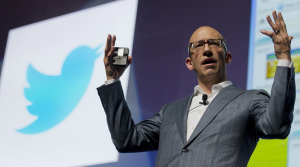Peak Design is a San Francisco-based startup company that generates accessories for small cameras. It recently just finished a Kickstarter campaign to launch its newest product, the Everyday Messenger Bag. The Kickstarter finished on a great note, with a countdown and celebration.
Interestingly enough, this is not Peak Design’s first Kickstarter campaign. In fact, it is its fifth. The company has been using Kickstarter to launch its new products since it first formed. The founder sees it as a great way to not only raise more money, but also to rope in initial customers who are already excited about the product. It seems to work, as Peak Design is doing very well.
Also, the company refuses to take on venture capitalists. This may seem counterintuitive, but Peter Dering, the owner of the company. wants to maintain his control of Peak Design. Their work model may not fit in with the work model of a venture capitalist, as Dering is constantly working from remote locations and employees are not given specific times in which they must be at work. They are encouraged to get out in the world and be active instead. Despite this, the company’s sales tripled in 2015 and, within its first year, Peak Design was profitable.
Dering’s launch of his company occurred at an ideal time. He created his first product, a clip that locks cameras to belts so they do not swing around, when Kickstarter was beginning to become a household name. Dering saw the investment platform as a built-in marketing plan for his products, and, $13 million in sales later, he still thinks along those lines.
Apparently, fully formed companies returning to websites like Kickstarter with new products is not an uncommon practice. However, Peak Design is part of the 1% that has gone back to the website 5 or more times. This is not for lack of trying, however. Peak Design got all it could with its credit out of a bank for its new product before going back to Kickstarter. The money from the bank would have only allowed them to order 5,000 bags, but using Funding Circle and Kickstarter gave them the money to order 45,000 bags. They would not have been able to do this otherwise without a venture capitalist, or having to sell a part of the company.
Overall, Kickstarter and platforms like it have proven to be a great resources for launching companies, and startup companies that have already launched. Startup founders like Dering prefer working in close-knit teams without any backer influence, which is exactly what crowdfunding has allowed him to do.
Whether or not this is sustainable in the long run has yet to be seen.
For more information on Peter Dering and Peak Design, check out this article in Forbes.
 According to data from Statista. Twitter currently has 302 million active users. This is a huge market that can really boost a brand if used correctly. An article in
According to data from Statista. Twitter currently has 302 million active users. This is a huge market that can really boost a brand if used correctly. An article in